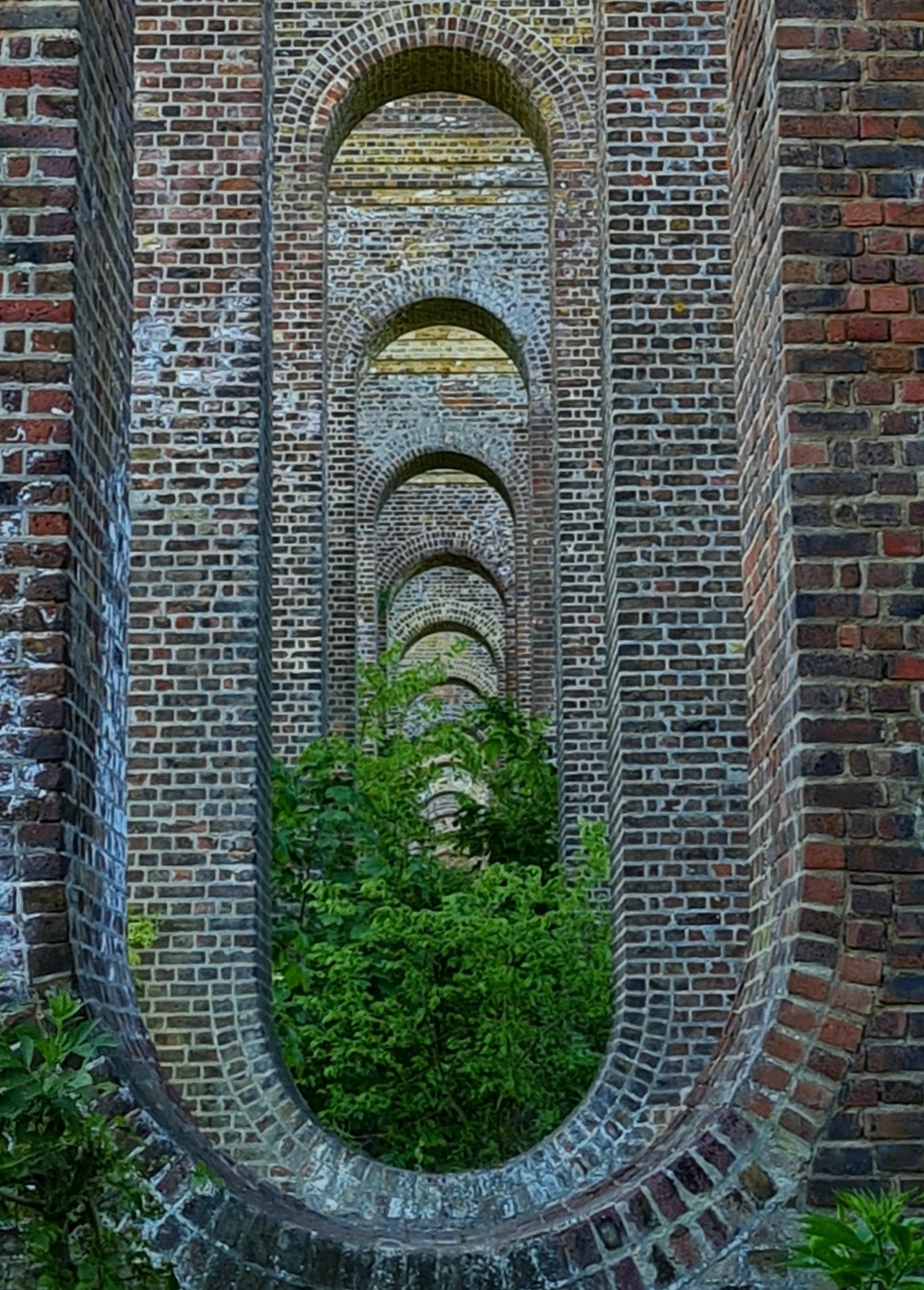Seven million bricks, made from clay excavated from the nearby village of Bures, were used in the
construction of Chappel Viaduct in Essex. Built to carry a double-track railway, just one was laid. Peter Bruff built this amazing viaduct between 1847 and 1849 for the Colchester, Stour Valley, Sudbury & Halstead Railway and, later, part of the Great Eastern Railway.
Historic Britain state the construction cost of building this elaborate bridge to have been £32,000 although there are differing sources who claim lesser costs were involved.
Initial plans were to build this structure from laminated timber but after debating cost benefits of brick with the Great Western Railway’s chief engineer, Isambard Kingdom Brunel after a lecture at the Institution of Civil Engineers (Brunel being strongly in favour of using timber).
Each pier of the viaduct is numbered—pier 21 contains a foundation stone laid by the railway company’s chairman and deputy chairman at the commencement of works in September 1847. Newly minted coins were placed inside as a souvenir. The stone and coins disappeared within a few hours of being placed and a bricklayer was later arrested after trying to pay with new half sovereigns at a bar. He wasn’t convicted due to lack of evidence.
The viaduct at Chappel, Essex showing the arches, looking through the centre of the shafts
and bottom left, a phone box library (you can just make out the arches in the distance

Consisting of 32, 30 foot (9.1m) semi-circular spans with tapered piers Chappel Viaduct is 1,060 feet (or 320m) long. Rising to a maximum height of 75 feet (23m). Each pier consists of two shafts that are separated by a 6 foot (2m) opening, joined at the top and bottom by arches. Each shaft contains a hollow void of up to 4 feet (1.2m) by 3 feet (1m) which is partially filled with concrete to the level of the bottom arch. The running level of the viaduct gradient of 1 in 120.
The viaduct was designated a Grade II listed structure on 27 November 1967 and is the longest bridge in East Anglia.
There is a great community feel about Chappel, a small part shown in the image above. the phone box library was packed out with books to share! One of the best we'd seen on our travels.